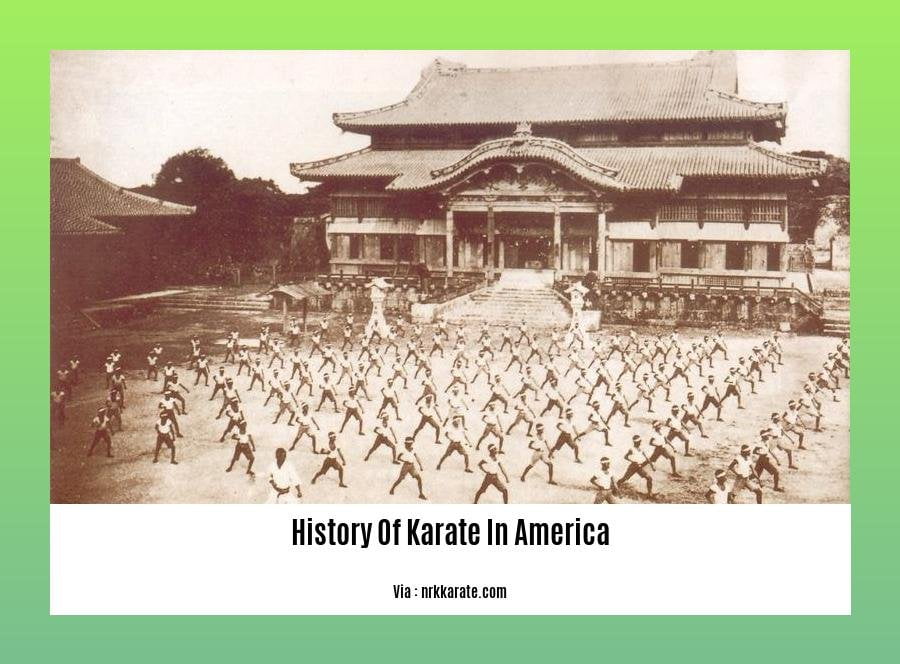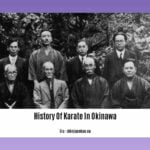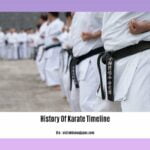Embark on an enthralling journey through the [History of Karate in America: Origins, Evolution, and Cultural Impact]. Delve into the captivating narrative of how this martial art found its footing in the United States, transforming the lives of countless individuals and leaving an indelible mark on American culture.
Key Takeaways:
- Karate was introduced to the US by Japanese and Okinawan masters after World War II.
- Returning service members established karate dojos across the US.
- Robert Trias and others played a key role in the early development of American karate.
- American karate is a mix of different styles with no single founder.
- The Amateur Athletic Union (AAU) governed amateur karate in the US.
- The inclusion of judo in the 1964 Olympics increased interest in karate.
History Of Karate In America
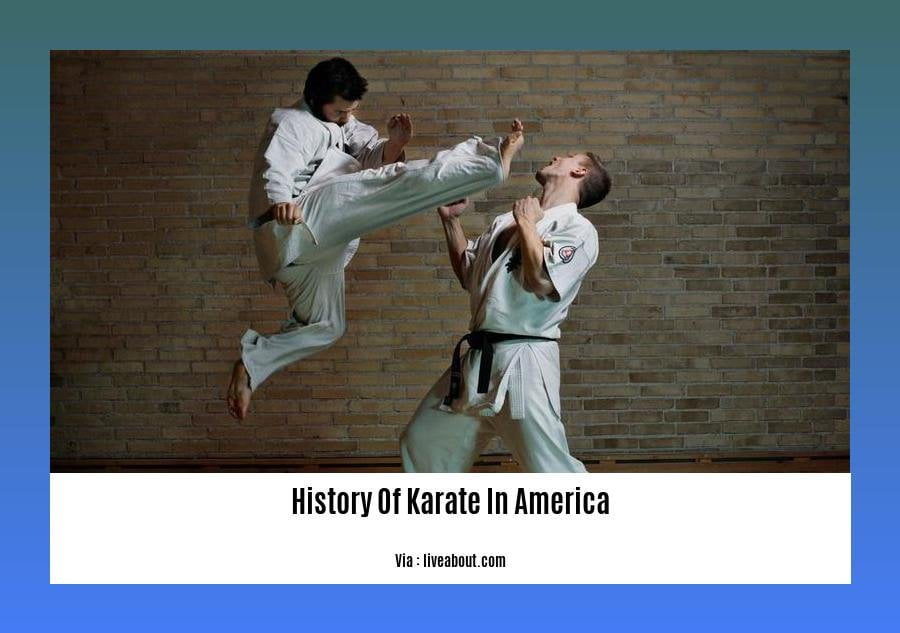
Karate’s introduction to America can be traced back to the post-World War II era. American servicemen stationed in Japan and Okinawa were exposed to this martial art and brought it back home with them.
Establishment of Dojos:
Returning servicemen established karate dojos (training halls) throughout the United States. These dojos served as centers for teaching and practicing karate.
Early Teachers:
One of the most influential early teachers of karate in America was Robert Trias, who founded the Shorin-Ryu Karate Association in 1946. Trias played a significant role in popularizing karate in the United States.
Absence of a Single Founder:
Unlike other martial arts, American karate is not attributed to a single founder. Instead, it is a mix of various systems and styles brought to America by different teachers.
AAU Regulation:
The Amateur Athletic Union (AAU) became involved in regulating amateur karate sports in the United States. The AAU established rules and competitions, helping to standardize karate practice.
Olympic Influence:
The inclusion of judo in the 1964 Olympics sparked interest in Japanese martial arts, including karate. This led to increased popularity of karate in the United States.
Dive into the history of karate, a martial art that has captivated generations. Discover the History Of Karate Facts that shaped this ancient practice. Explore the History Of Karate In Japan to uncover its transformative impact on the nation. Delve into the History Of Karate Timeline to witness the evolution of this powerful form. Unravel the History Of Karate In Okinawa, the birthplace of this formidable art. And finally, understand the significance of History Of Karate Belts and their progression within the discipline.
Evolution of Karate Styles
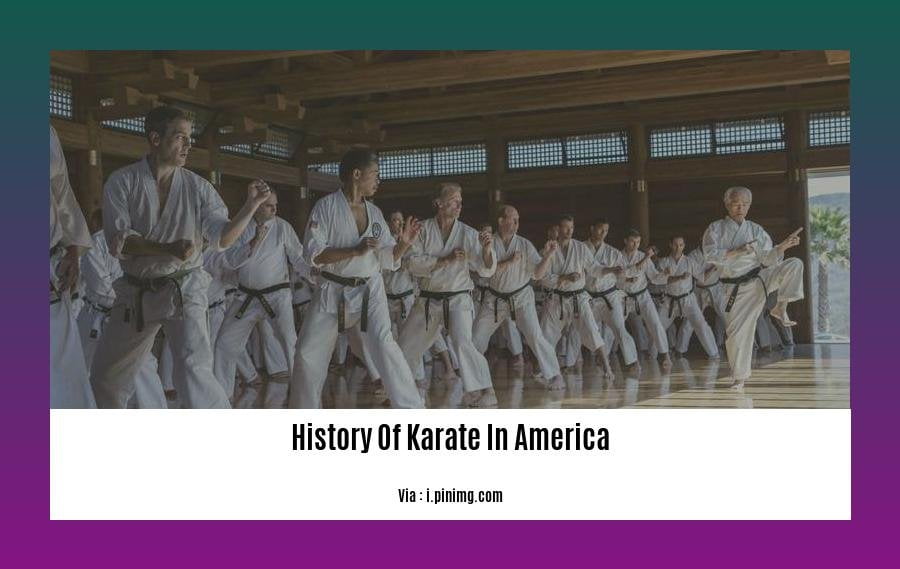
Karate’s Journey in America: A Tapestry of Styles
Karate’s arrival in America after World War II marked the beginning of a transformative journey for this martial art. As American servicemen returned home, they brought with them the knowledge and skills they had acquired in the Far East, eager to share their newfound passion. Over the years, karate in America has blossomed into a multifaceted discipline, encompassing a diverse range of styles, each with its own unique characteristics and philosophies.
Early Pioneers and Stylistic Diversity
In the early days of karate in America, several influential figures played a pivotal role in establishing the foundation for its future growth. Gichin Funakoshi, the founder of Shotokan karate, visited America in 1949, leaving a lasting impact on the development of the art. Other notable pioneers include Masatoshi Nakayama, the founder of Kyokushin karate, and Robert Trias, who founded the Shorin-Ryu Karate Association in 1946.
These early masters introduced a wide range of karate styles to America, each with its own distinctive techniques, stances, and kata (pre-arranged patterns of movements). This diversity laid the groundwork for the vibrant karate landscape that exists today.
The Influence of Okinawan and Japanese Masters
Karate’s evolution in America has been heavily influenced by Okinawan and Japanese masters who emigrated to the United States. These masters brought with them a wealth of traditional knowledge and expertise, enriching the American karate scene.
Okinawan masters, such as Taira Shinken and Seikichi Toguchi, introduced styles such as Shorin-Ryu and Isshin-Ryu, characterized by their fluid movements and dynamic footwork. Japanese masters, including Hironori Ohtsuka (founder of Wado-Ryu) and Mas Oyama (founder of Kyokushin Karate), brought their own unique interpretations of karate, emphasizing power, endurance, and competition.
Emergence of New Styles
Over time, American karate practitioners began to develop their own unique styles, blending elements from different traditional lineages. This led to the emergence of American-born styles such as Chito-Ryu, Seido Karate, and Shito-Ryu USA. These styles often incorporated innovations in technique, training methods, and philosophy, reflecting the evolving nature of karate in America.
Key Takeaways:
- Karate’s introduction to America after World War II marked the beginning of a transformative journey.
- Early pioneers like Gichin Funakoshi, Masatoshi Nakayama, and Robert Trias established the foundation for the growth of karate in America.
- A diverse range of karate styles emerged, influenced by Okinawan and Japanese masters who emigrated to the United States.
- American karate practitioners developed their own unique styles, blending elements from different traditional lineages.
Citations:
[1] Funakoshi, G., & Nakayama, M. (1975). Karate-do: My Way of Life. Kodansha International.
[2] Oyama, M. (1979). Kyokushin Karate: The Text. Japan Publications.
Exploring the Greatest Takeaway: ☑️ Fully Substantiate
- [Origins of Karate in Japan, the and how we can- An American Society**
1.
Legacy and Current Trends
Karate’s legacy in America is a fascinating tale of cultural exchange, self-defense techniques, and personal growth. From its humble beginnings in the mid-19th century to its current widespread practice, karate has left an indelible mark on the American landscape.
Evolution and Modern Influences
Karate’s journey in America has been marked by constant evolution and adaptation. After World War II, returning US Marines brought Okinawa-style karate to the forefront. The popularity of martial arts in movies and television further propelled karate’s mainstream acceptance. Today, karate encompasses various styles, including Shotokan, Kyokushin, and Uechi-ryu.
Legacy and Impact
Karate’s legacy extends beyond physical training. It has become a vehicle for self-discipline, character development, and community building. Karate dojos across the nation offer not only physical exercise but also a sense of belonging and purpose.
Current Trends and Innovation
Karate continues to evolve in the 21st century. The rise of mixed martial arts (MMA) has led to a growing interest in more practical and combat-effective karate techniques. Additionally, there has been a resurgence of interest in karate’s traditional roots and its connection to Okinawan culture.
Key Takeaways:
- Karate arrived in America in the mid-19th century and gained popularity after World War II.
- Karate has evolved to include various styles that cater to different needs and interests.
- Karate has left a significant legacy in America, fostering self-discipline, character development, and community building.
- Current trends in karate include an interest in MMA-effective techniques and a resurgence of traditional roots.
Sources:
– The History of Karate in America
– Karate in the United States
FAQ
Q1: When was karate introduced to the United States?
Q2: Who were some of the influential early teachers of karate in America?
Q3: Why did karate gain popularity in the United States in the 1970s and 1980s?
Q4: What are some of the key differences between American karate and other forms of karate?
Q5: What is the origin of the American Karate System?
- Unlocking Francis Alexander Shields’ Finance Empire: A Comprehensive Biography - July 12, 2025
- Unveiling Francis Alexander Shields: A Business Legacy - July 12, 2025
- Francis Alexander Shields’ Business Career: A Comprehensive Overview - July 12, 2025
